Materials
You Will Rip on a Wood Board
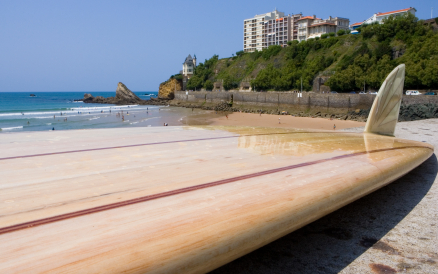 The recent acceptance of new surfboard manufacturing techniques and materials has spurned a select group of shapers to use wood as a chief ingredient to their board building recipe. The resurgence of wood boards has resulted in beautiful works of art that use wood’s characteristics to boost performance. The environmentally friendly materials and manufacturing process make these surfboards great options for surfers looking for green, high performance boards.
The recent acceptance of new surfboard manufacturing techniques and materials has spurned a select group of shapers to use wood as a chief ingredient to their board building recipe. The resurgence of wood boards has resulted in beautiful works of art that use wood’s characteristics to boost performance. The environmentally friendly materials and manufacturing process make these surfboards great options for surfers looking for green, high performance boards.
One such shaper to focus on the properties of wood is Danny Hess, founder of Hess Surboards. Hess is a wood working craftsman who now resides in San Francisco, California. His thoughtful approach to the resources he uses influences his view on board technology and the materials offering the best performance with the least environmental impact.
To start, each of Hess’ boards is built using Amapola, Cork and Poplar due to these materials' high tensile strength to weight ratio. This strength is applied when crafting the boards’ wooden perimeter frame. This frame and the perimeter stringer eliminate the twisting characteristic (torsion flex) found in traditional foam/center stringer surfboards. While torsion flex can cause loss of speed, Hess’ design results in a predictable amount of flex memory along the stringer and rail line, producing a transfer of energy that is very efficient and responsive. Showing a nice balance of old school and new school, Hess then inserts an EPS foam core, shapes the deck and bottom contours, and uses a wood skin to bond the perimeter frame to the EPS.
The green benefits of this manufacturing process are substantial. The boards are made from reclaimed and sustainably harvested wood, recyclable EPS foam, and cork which is a renewable resource. Epoxy resin is used because it emits very low volatile organic compounds and each board uses roughly half the fiberglass used in a traditional foam surfboard. Each Hess board has a longer lifespan because wood does not break down or lose its responsiveness like a standard PU board.. That means fewer new boards and fewer dead boards in landfills.
Hess is not alone in his desire to produce greener surfboards. A quick Google search for wooden surfboards will produce many sites for shapers who care about their environment and their customers’ surfing. The irony is that while surfers generally care a great deal about the environment, our sport is one of the greatest offenders to global pollution. Perhaps we should take a few minutes to learn about a new cleaner manufacturing technique using an old material that just may improve our surfing.



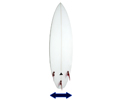


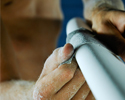
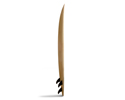





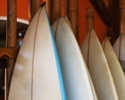
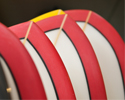
0 Comments